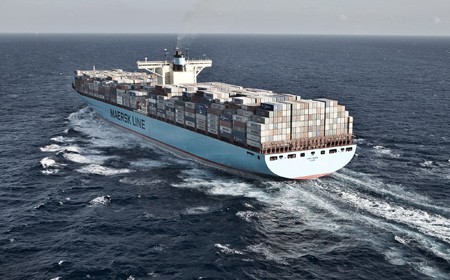OPINION: As Defra unveils plans for a deposit return scheme, Gev Eduljee, non-executive director at Resource Futures, assesses the way ahead for extended producer responsibility and the PRN system.
The application of Extended Producer Responsibility (EPR) to packaging and packaging waste in the UK has assumed a higher profile than one would have expected even a few months ago. With the UK now poised to adopt the EU Circular Economy Package, reviewing our market-based PRN system has acquired an added piquancy.

Gev Eduljee
The Environmental Services Association (ESA) can claim particular credit for opening this debate, with its recommendation in 2016 to move to full cost recovery by “transfer[ing] resource ownership from the public sector to product supply chains”, catching the eye of the then minister, Rory Stewart.
A flurry of initiatives has now surfaced, the NAO review and the WRAP/INCPEN cross-sector meetings being but two. Ironically, this comes less than a year after a rather complacent post implementation review by Defra declared that the UK’s system was fit for purpose. Two excellent reviews by Perchards and 360 Environmental for the ESA (A discussion of the UK PRN/PERN system for packaging waste and possible alternatives) and by Valpak (PackFlow 2025) begged to differ.
Seen in the light of the higher recycling targets proposed by the European Commission, while the UK’s PRN system is generally compatible with the principles of competition and good governance contained in Article 8/8a of the revised Waste Framework Directive, the BioIS study for the European Commission (Development of Guidance on EPR, 2014) commented on three “disadvantages and possible challenges of the system”:
- The system is not designed to cover the full cost of treatment of packaging waste – the percentage of total collection and treatment costs is estimated as 5–10%;
- Fluctuating prices for PRNs and PERNs means that there is uncertainty over costs for producers;
- There is no direct regulatory requirement for local authorities to receive any of the funding generated by the PRN system, whereas reprocessors can spend the financial flows in a number of ways, including price support.
Principles and definitions
The first issue for the UK is to agree principles and definitions. What exactly does EPR mean in this context as opposed to, say, WEEE or batteries? Should producers cover the full cost of the post-consumer management of their products, including the costs for disposal of their products/materials that cannot be recycled, communications and littering? How should it be calculated? Should it be net of revenues from material sales? Should this cost be shared across various actors as presently under the PRN system? Does the householder have a responsibility for funding waste management, and if so to what extent? How should revenues be channelled to local authorities, or should obligated producers fund and run collections directly? Without this foundational underpinning PRN review is groping in the dark.

Glass is one of the materials which has relied on household collection routes
The second issue relates to local authority costs, dependent on the degree to which the proposed obligated targets needs to rely on household waste collections and processing. Making the Most of Packaging (Defra, 2009) identified glass and aluminium as the materials which have hitherto relied on household waste collection. The ESA and Valpak reports noted above agree that materials such as plastics will also rely on local authority collections – commercial plastics being dominated by LDPE and household plastics by HDPE and PET.
Local authorities
For many years local authorities have expressed disquiet over the flow of PRN revenues toward enhancing kerbside packaging waste collections. The argument has been advanced that without some reform of the system, higher targets – particularly on lightweight packaging – will simply increase the financial burden on local authority budgets, a burden many authorities would likely be unwilling to bear in the present economic climate.
It is also debatable whether the present PRN system will generate sufficient revenue to support a significant enhancement in local authority packaging waste collection. Local authorities spend approximately £1.8 billion annually on waste collection and recycling within total waste management costs of £3.3 billion, including £100 million on litter management. Historically, annual PRN/PERN revenue has varied between about £60-£110 million. Even if 50% of this revenue was injected annually into UK local authority collections, this would amount to a 2.0-2.5% additional contribution, or an additional £1 per head of population per year. Some dissipation of the fund will also occur because the enhanced collections will pick up non-packaging material as well.
The third issue relates to how much additional recycling and reprocessing capacity will be required to bridge the gap between the existing and proposed targets, as well as new technologies to deal with the plastic films, PTTs, etc that have hitherto been collected sporadically at the kerbside.
It is generally accepted that the PRN system does not readily lend itself to funding domestic recycling infrastructure. Fluctuating PRN/PERN prices (sometimes close to £0) are not conducive to stable investment; conservative business cases will be built on the assumption of a very low or zero value of PRN support. Moreover, there is a tension between producers wanting to keep PRN/PERN prices low, and recyclers relying on high prices to fund investment. Low demand for packaging material in the UK (for example due to closure of paper reprocessing capacity) means reliance on the export market.
On the other hand, restricting exports while there is a lack of domestic reprocessing capacity in the UK would tend to increase prices as there would be greater competition for a limited supply of PRNs, insufficient to meet the UK’s Obligation. Indeed, the Scottish Government estimated that since the commencement of the Packaging Obligations, UK reprocessing has increased by 29% while exports have increased by 2600% (Producer Responsibility: Policy Evaluation, 2011).
It would appear that the Government has two options to reform the PRN system: the tinkering option, and the radical option.
‘Tinkering’
The tinkering option would keep the present system largely intact, accepting the system for what it is and keeping the PRN system as a pure market-based economic instrument. Disallow PRN/PERN revenues being used to support market prices. To increase effectiveness, PRN/PERN funds would have to be highly targeted, increasing the quantum of support for a limited number of local authorities rather than spreading the fund thinly across all of local government – in effect, turning the revenue pot into a challenge fund by earmarking a specific percentage of the financial flow to be credited to a central clearinghouse from where it can be used as a challenge fund and distributed to local authorities to be used for infrastructure development and domestic capacity-building. By consolidating individual revenue streams, this has the advantage of creating a single funding pot which can be more strategically deployed on the strength of robust business cases put forward by developers. Monitoring how and where these funds are used is also eased.

Strong export routes for recyclables will be needed, even if only as a safety valve
Defra must then consider other policy levers to incentivise higher recycling of packaging waste. If the UK adopts the Circular Economy Package, these measures are already substantially on the table – statutory recycling targets, landfill restrictions, higher landfill tax, etc – with the added advantage that these measures will apply equally to all waste. No special arrangements need to be made specifically for packaging waste, save to ensure that municipal waste recycling targets subsume those for packaging waste.
‘Radical’
But if cost recovery and transfer of costs to producers are agreed objectives, then a radical change to EPR as it applies to packaging in the UK is all but inevitable. This can only be done by building up a cost to producers as a levy reflecting structural assets and operating costs, plus other agreed costs (communications, littering). Funds to local authorities would be distributed through a central clearinghouse or through other mechanisms – for example, through Producer Responsibility Organisations linked to each local authority collection contract. Spend would be monitored to ensure collections are enhanced. Year-end reconciliations would repatriate material revenues to producers and local authorities on an agreed revenue share basis.
Finally – improved collections will drive more material into the recycling market. Notwithstanding the merits of a levy-based system, the fact remains that ultimately it is a stable and viable market that will drive new capacity-building. Alongside developing a domestic market for these materials through the government’s Industrial and Resources Strategies, the UK must maintain a strong export route, if only as a safety valve in the event that domestic capacity-building and/or markets cannot react sufficiently quickly to address the higher targets.
The post Mechanisms to boost packaging recycling rates appeared first on letsrecycle.com.
Source: letsrecycle.com Packaging


